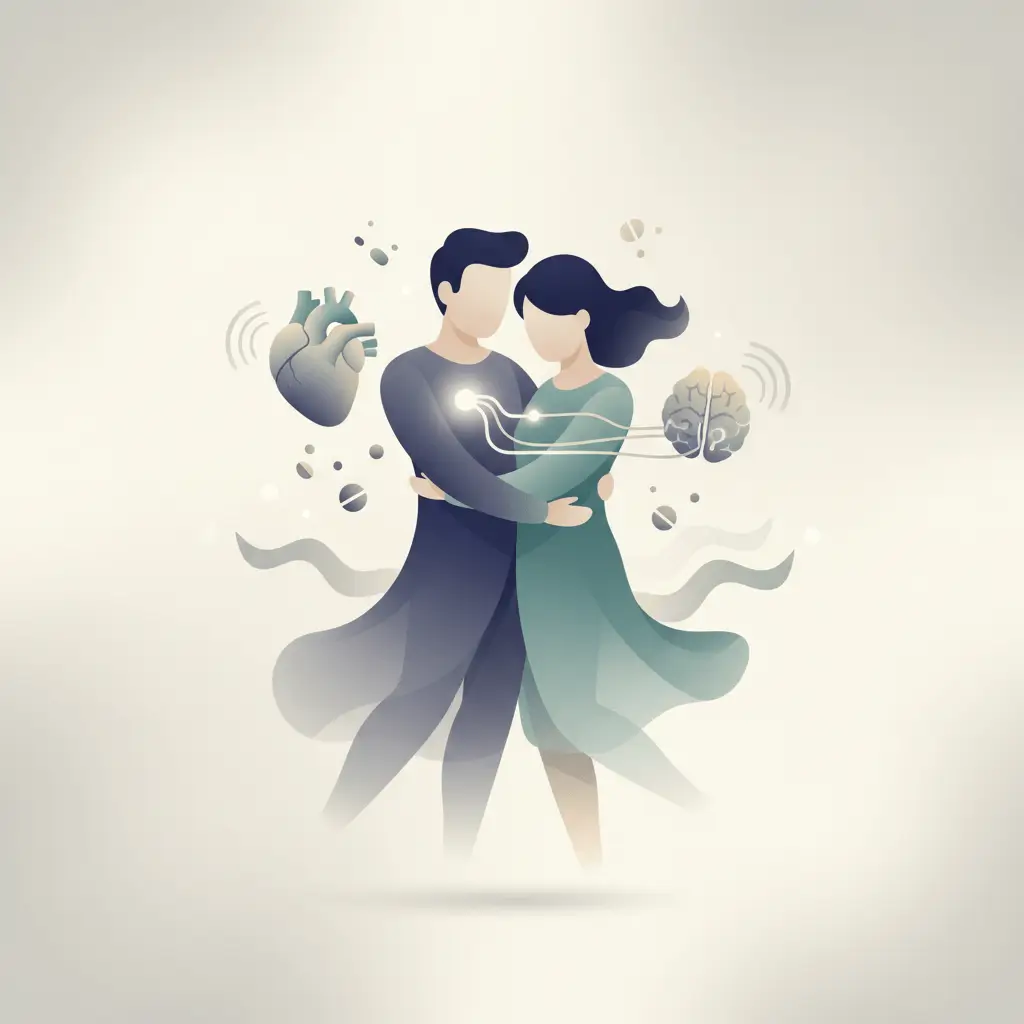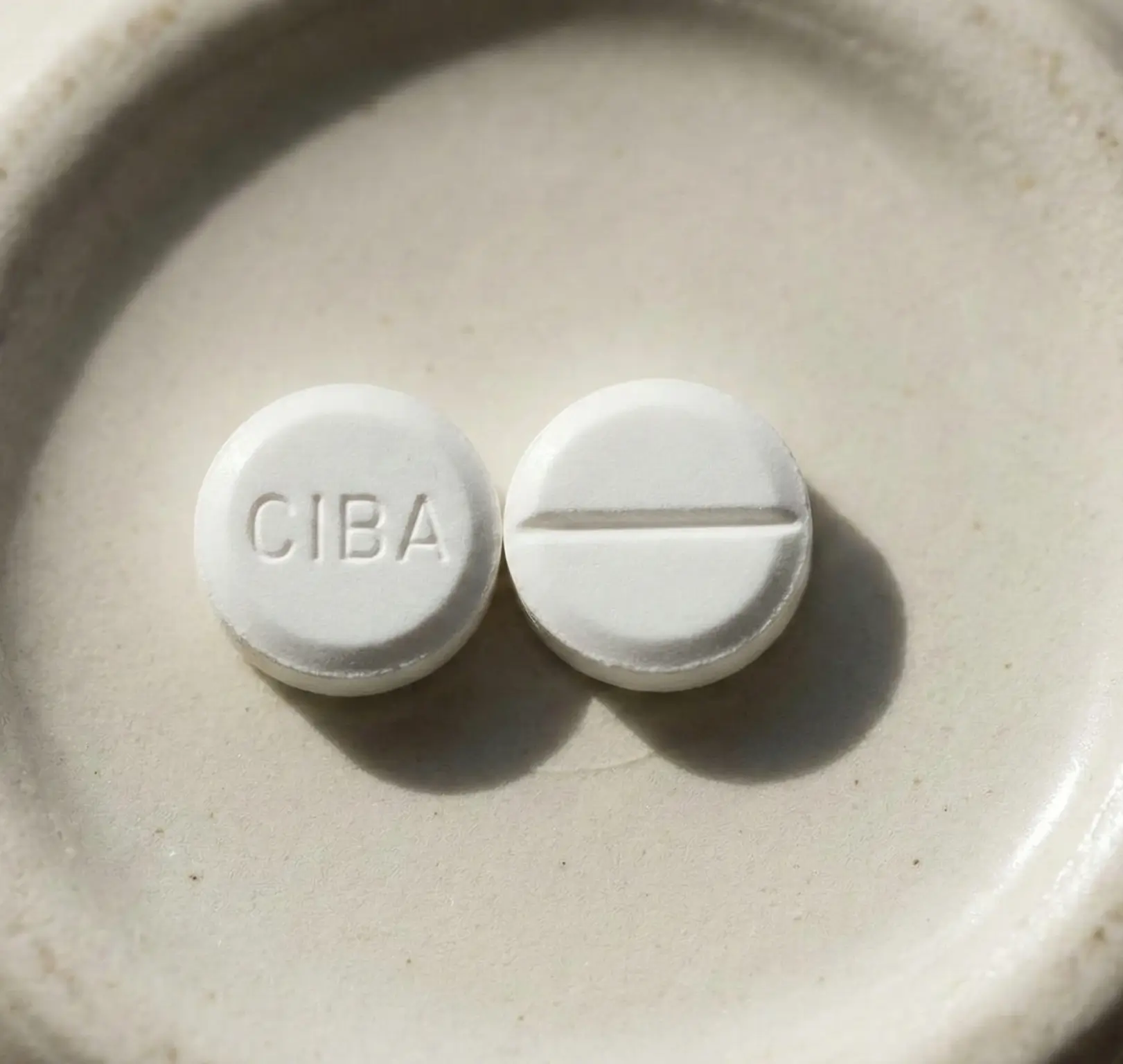Understanding Party Drugs
When it comes to the world of recreational substances, party drugs play a prominent role. It is important to have a clear understanding of what party drugs are and the different types that exist.

What are Party Drugs?
Party drugs, also known as recreational drugs or club drugs, are substances that are commonly used in social settings, such as parties, clubs, or music festivals. These substances are often sought after for their psychoactive effects, which can induce feelings of euphoria, heightened sensory perception, and increased sociability.
Party drugs can include various types of substances, both legal and illegal, that are used for recreational purposes. It is essential to note that the use of party drugs carries potential health risks and legal implications. Understanding the nature and effects of these substances is crucial for making informed decisions.
Different Types of Party Drugs
There are several types of party drugs available, each with its own unique effects and risks. Some common types of party drugs include:
Drug and Description
MDMA (Ecstasy, Molly): A stimulant and hallucinogenic drug known for its euphoric effects and increased empathy.
Cocaine: A powerful stimulant that produces intense feelings of euphoria and increased energy.LSDA hallucinogenic drug that alters perception, leading to visual hallucinations and an expanded consciousness.
Ketamine: A dissociative anesthetic that can induce hallucinations, sedation, and a sense of detachment from reality.
Marijuana (Cannabis): A psychoactive drug that produces a relaxed state, altered perception, and increased appetite.
GHB: A central nervous system depressant that can induce sedation, euphoria, and amnesia.
It is important to note that the effects and risks associated with each type of party drug can vary significantly. Factors such as dosage, purity, individual tolerance, and the presence of other substances can influence the overall experience and potential harm.
By understanding what party drugs are and having knowledge of the different types available, individuals can make informed decisions regarding their own well-being and the well-being of those around them. It is crucial to prioritize safety, educate oneself about the risks, and seek help or support when needed.
Common Party Drugs
Party drugs, also known as recreational drugs or club drugs, are substances that are often used in social settings to enhance the party experience. They can have various effects on the mind and body, and their use carries both immediate and long-term risks. Here are some of the most commonly used party drugs:
MDMA (Ecstasy, Molly)
MDMA, also known as Ecstasy or Molly, is a synthetic psychoactive drug that is popular in party and rave scenes. It produces feelings of increased energy, euphoria, and emotional warmth. MDMA enhances sensory perception and can lead to heightened empathy and a desire for physical touch. It is usually consumed orally in pill form.
Common Names and Effects
Ecstasy, Molly
- Increased energy and euphoria
- Heightened sensory perception
- Enhanced empathy and sociability
- Increased heart rate and blood pressure
- Dehydration
Cocaine
Cocaine is a powerful stimulant derived from the coca plant. It is typically snorted, although it can also be smoked or injected. Cocaine induces a sense of euphoria, increased energy, and heightened alertness. However, the effects are temporary and can be followed by intense cravings and a crash.
Common Names and Effects
Coke, Blow, Snow
- Intense euphoria and increased energy
- Heightened alertness and confidence
- Increased heart rate and blood pressure
- Risk of heart attack or stroke
- Addiction potential
LSD
LSD, also known as acid, is a hallucinogenic drug that alters perception and mood. It is commonly taken orally on small pieces of paper called tabs or blotter paper. LSD produces vivid hallucinations, sensory distortions, and an altered sense of time and self. The effects can be unpredictable and vary from person to person.
Common Names and Effects
Acid, Tabs
- Hallucinations and sensory distortions
- Altered perception of time and self
- Enhanced creativity and introspection
- Increased heart rate and blood pressure
- Possible anxiety or paranoia
Ketamine
Ketamine is a dissociative anesthetic that is often used in veterinary medicine. In party settings, it is used recreationally for its hallucinogenic and sedative effects. Ketamine can induce a trance-like state and a sense of detachment from one's body, leading to an "out-of-body" experience. It is typically snorted or injected.
Common Names and Effects
Special K, K, Kit Kat
- Distorted perception of sight and sound
- Euphoria and relaxation
- Dissociative effects and detachment from reality
- Impaired coordination and motor function
- Potential for addiction
Marijuana (Cannabis)
Marijuana, also known as cannabis or weed, is a psychoactive drug derived from the Cannabis plant. It is typically smoked, vaporized, or consumed orally. Marijuana produces a range of effects, including relaxation, euphoria, altered perception, and increased appetite. The potency and effects can vary depending on the strain and method of consumption.
Common Names and Effects
Weed, Pot, Ganja
- Relaxation and euphoria
- Altered perception of time and space
- Increased appetite
- Impaired memory and coordination
- Possible anxiety or paranoia
GHB
GHB (gamma-hydroxybutyrate) is a depressant that is often referred to as a "date rape drug" due to its association with sexual assault. It is a clear liquid or powder that is usually consumed orally. GHB can induce feelings of relaxation, euphoria, and increased sociability. However, it is important to note that GHB is illegal in many countries due to its potential for abuse and the associated risks.
Common Names and Effects
Liquid X, Liquid Ecstasy
- Relaxation and increased sociability
- Euphoria and reduced inhibitions
- Dizziness and confusion
- Nausea and potential for overdose
- Risk of addiction and withdrawal symptoms
Understanding the common party drugs is essential for making informed decisions and promoting safer party experiences. It is important to note that the use of party drugs carries significant risks, both in the short-term and long-term. It is always advisable to prioritize personal safety and make informed choices regarding substance use.
Effects and Risks
Party drugs can have various effects on the mind and body, both in the short-term and long-term. Understanding these effects and risks is crucial in order to make informed decisions and prioritize personal well-being. In this section, we will explore the short-term effects of party drugs and the potential long-term risks associated with their use.
Short-Term Effects of Party Drugs
The short-term effects of party drugs can vary depending on the specific substance used. Here are some common short-term effects experienced by individuals who use party drugs:
Drug and Short-Term Effects
- MDMA (Ecstasy, Molly): Euphoria, increased energy, heightened sensory perception, enhanced emotional warmth
- Cocaine: Increased alertness, intense pleasure, heightened confidence, elevated heart rate
- LSD: Altered perception of reality, hallucinations, changes in mood and thought patterns
- Ketamine: Sedation, dissociation from one's body, hallucinations, impaired coordination
- Marijuana (Cannabis): Relaxation, altered perception of time, increased appetite, impaired memory and coordination
- GHB: Euphoria, increased sociability, drowsiness, decreased inhibitions
While these short-term effects may seem appealing to some individuals, it's important to note that they can also come with potential risks and dangers. The intensity of these effects can vary depending on factors such as the dosage, purity of the substance, and individual susceptibility.
Long-Term Risks of Party Drug Use
Continued use of party drugs can lead to various long-term risks and health consequences. It's important to be aware of these potential risks in order to make informed decisions about substance use. Here are some long-term risks associated with the use of party drugs:
Drug and Long-Term Risks
- MDMA (Ecstasy, Molly): Memory and cognitive impairments, mood disorders, sleep disturbances, potential neurotoxicity
- Cocaine: Addiction, cardiovascular problems, respiratory issues, neurological disorders
- LSD: Flashbacks, persistent psychosis, anxiety disorders, mood disordersKetamineUrinary tract problems, cognitive impairments, addiction, psychological dependence
- Marijuana (Cannabis): Respiratory problems, impaired memory and cognitive function, increased risk of mental health disorders
- GHB: Addiction, withdrawal symptoms, respiratory depression, overdose
It's important to remember that these long-term risks can vary depending on individual factors such as frequency and duration of use, genetic predisposition, and overall health status. Seeking professional help and support is crucial if you or someone you know is struggling with party drug use and its potential long-term risks.
Understanding the effects and risks associated with party drugs can help individuals make informed decisions about their own well-being. If you or someone you know is using party drugs, it's important to be aware of the potential short-term effects and long-term risks in order to prioritize personal health and safety.
Signs of Drug Use
Recognizing the signs of drug use is crucial in identifying potential substance abuse issues. Party drugs can have various effects on a person's physical, behavioral, and social well-being. Being aware of these signs can help individuals and loved ones intervene and seek appropriate support. Here are some key signs to look out for:
Physical Signs
Physical signs of drug use can manifest differently depending on the type of party drug consumed. It's important to note that these signs can also be indicative of other health conditions. If you observe multiple physical signs in an individual, it may be worth exploring further. The table below outlines some common physical signs associated with drug use:
Physical Signs and Description
- Dilated pupils: Enlarged pupils, often unresponsive to changes in light
- Changes in appetite: Increased or decreased appetiteWeight loss or gain
- Noticeable changes in body weight: Bloodshot or glazed eyesRedness or glassy appearance in the eyes
- Poor coordination: Difficulty walking or performing tasks that require fine motor skills
- Unusual body odors: Unpleasant or distinct smells on the individual or their belongings
- Frequent nosebleeds: Repeated nosebleeds, especially associated with stimulant drug use
- Track marks or needle punctures: Visible marks or scars from injecting drugs
Behavioral Signs
Changes in behavior can be strong indicators of drug use. Individuals may display alterations in their normal routines, relationships, and overall demeanor. The following behavioral signs may suggest drug use:
Behavioral Signs and Description
- Mood swings: Rapid and extreme shifts in emotions
- Increased secrecy: Being evasive or secretive about activities and whereabouts
- Loss of interest: Decreased participation in previously enjoyed activities or hobbies
- Impaired judgment: Poor decision-making and risky behavior
- Changes in sleep patterns: Insomnia, excessive sleep, or irregular sleep-wake cycles
- Neglecting responsibilities: Failing to fulfill obligations at work, school, or home
- Financial difficulties: Unexplained money problems or borrowing money frequently
- Sudden changes in friendships: Associating with new and potentially risky social circles
Social Signs
Drug use often has a significant impact on an individual's social interactions and relationships. These signs may be observed by friends, family members, or colleagues. The following social signs could indicate potential drug use:
Social Signs and Description
- Isolation or withdrawal: Withdrawing from social activities and preferring solitude
- Increased conflict: Frequent arguments or disputes with loved ones
- Changes in peer group: Spending time with individuals known for drug use or criminal activity
- Loss of interest in personal appearance: Neglecting personal hygiene and grooming
- Decreased academic or work performance: Decline in productivity or academic achievement
- Legal issues: Being involved in legal problems related to drug offenses
- Unexplained financial gifts: Receiving money or gifts from unknown sources
- Borrowing or stealing money: Consistently borrowing money or stealing to support drug use
Recognizing these signs is an important step in identifying possible drug use. However, it's essential to approach the situation with care and compassion. If you suspect someone is using party drugs, it is recommended to seek professional help and support to address the issue effectively.
Getting Help and Support
When it comes to party drug use, recognizing the need for help and seeking support is crucial for individuals who may be struggling. Here are some steps to consider when seeking help and support.
Recognizing the Need for Help
Recognizing the need for help is an important first step in addressing party drug use. It may be challenging to acknowledge the problem, but being aware of the signs and symptoms can help individuals and loved ones realize that assistance is needed. Some common signs that may indicate the need for help include:
- Increased tolerance to the drug
- Experiencing withdrawal symptoms when not using the drug
- Neglecting responsibilities and obligations
- Engaging in risky behaviors while under the influence
- Relationship problems
- Decline in physical or mental health
If you or someone you know is experiencing these signs, it is essential to reach out for support.
Seeking Professional Help
Seeking professional help is a crucial step in addressing party drug use. There are various healthcare professionals and resources available to provide guidance and support. Here are some options to consider:
- Primary Care Physician: A primary care physician can conduct an initial assessment, provide medical advice, and refer individuals to appropriate specialists or treatment programs.
- Addiction Specialists: Addiction specialists, such as psychiatrists or psychologists, have expertise in treating substance use disorders. They can provide therapy, counseling, and develop personalized treatment plans.
- Counselors and Therapists: Licensed counselors and therapists can offer individual or group therapy, helping individuals address underlying issues and develop coping strategies to overcome drug use.
- Support Groups: Support groups, such as Narcotics Anonymous (NA) or Alcoholics Anonymous (AA), provide a supportive community of individuals who have experienced similar struggles. Attending these meetings can offer guidance, encouragement, and a sense of belonging.
- Helplines and Hotlines: Helplines and hotlines, such as the Substance Abuse and Mental Health Services Administration (SAMHSA) National Helpline, offer confidential and immediate assistance, providing information, referrals, and support.
Remember, seeking professional help is not a sign of weakness but a courageous step towards recovery.
Support for Individuals and Loved Ones
Support is crucial not only for individuals struggling with party drug use but also for their loved ones. It can be challenging to witness someone going through substance abuse, but there are ways to offer help and support. Here are some strategies to consider:
- Educate Yourself: Learn about party drugs, addiction, and the recovery process. Understanding the challenges and available resources can help you provide informed support.
- Be Non-Judgmental: Approach conversations with empathy and understanding. Avoid blaming or shaming the individual, as this may hinder their willingness to seek help.
- Encourage Treatment: Express your concern and encourage the person to seek professional help. Offer to assist in finding suitable treatment options and accompany them to appointments if needed.
- Establish Boundaries: While supporting someone with party drug use, it's important to establish clear boundaries. Set limits on enabling behaviors and prioritize your own well-being.
- Seek Support for Yourself: Caring for someone with substance abuse can be emotionally challenging. Reach out to support groups or seek therapy to process your feelings and find guidance.
Remember, recovery is a journey that requires time, effort, and support. By recognizing the need for help, seeking professional assistance, and offering support to individuals and loved ones, the path to recovery becomes more manageable.
Sources
Common Types of Party Drugs Young Adults Abuse
3 of the Most Dangerous Party Drugs
Related MDMA & Ecstasy Articles
- What Is Ecstasy Made From? — Explore how ecstasy (MDMA) is synthesized, what street pills may actually contain, and why purity is unpredictable.
- Blue Dolphin MDMA: The Hidden Dangers of This Ecstasy Pill — A detailed look at a specific illicit ecstasy pill brand, its risks, adulterants, and overdose potential.
- Molly: What We Can Learn from the Wesleyan 12 — Examines a real incident of Molly use, the risks of adulteration and how that informs safe-use & treatment conversations.
- What Are Party Drugs? — Broad overview of “party drugs” including MDMA, how they're used socially, and what the risks and trends are.
- Substance Abuse Treatment - If you or someone close to you is struggling with addiction to these substances we are here to help.
At Prescott House, Recovery Becomes Reality
MDMA and Ecstasy use can quickly spiral from experimentation into dependence, anxiety, relationship problems, and dangerous patterns of substance misuse. At Prescott House in Prescott, Arizona, we help men rebuild their lives through long-term, evidence-based treatment that addresses both substance use and co-occurring mental health issues.
Explore Our Specialized Programs:
- Long-Term Addiction Treatment for Men — Structured healing, accountability, and extended care designed for lasting recovery.
- Substance Abuse Treatment — Comprehensive care for alcohol and drug dependence, including stimulant and club-drug misuse.
- Gambling Addiction Treatment — Support for men struggling with compulsive gambling and related behaviors.
- Sex & Process Addiction Programs — Compassionate treatment for compulsive behaviors, sexual addiction, and pornography addiction.
- Dual Diagnosis Treatment — Integrated care for co-occurring mental health and substance use disorders.
👉 Learn more about our programs →













